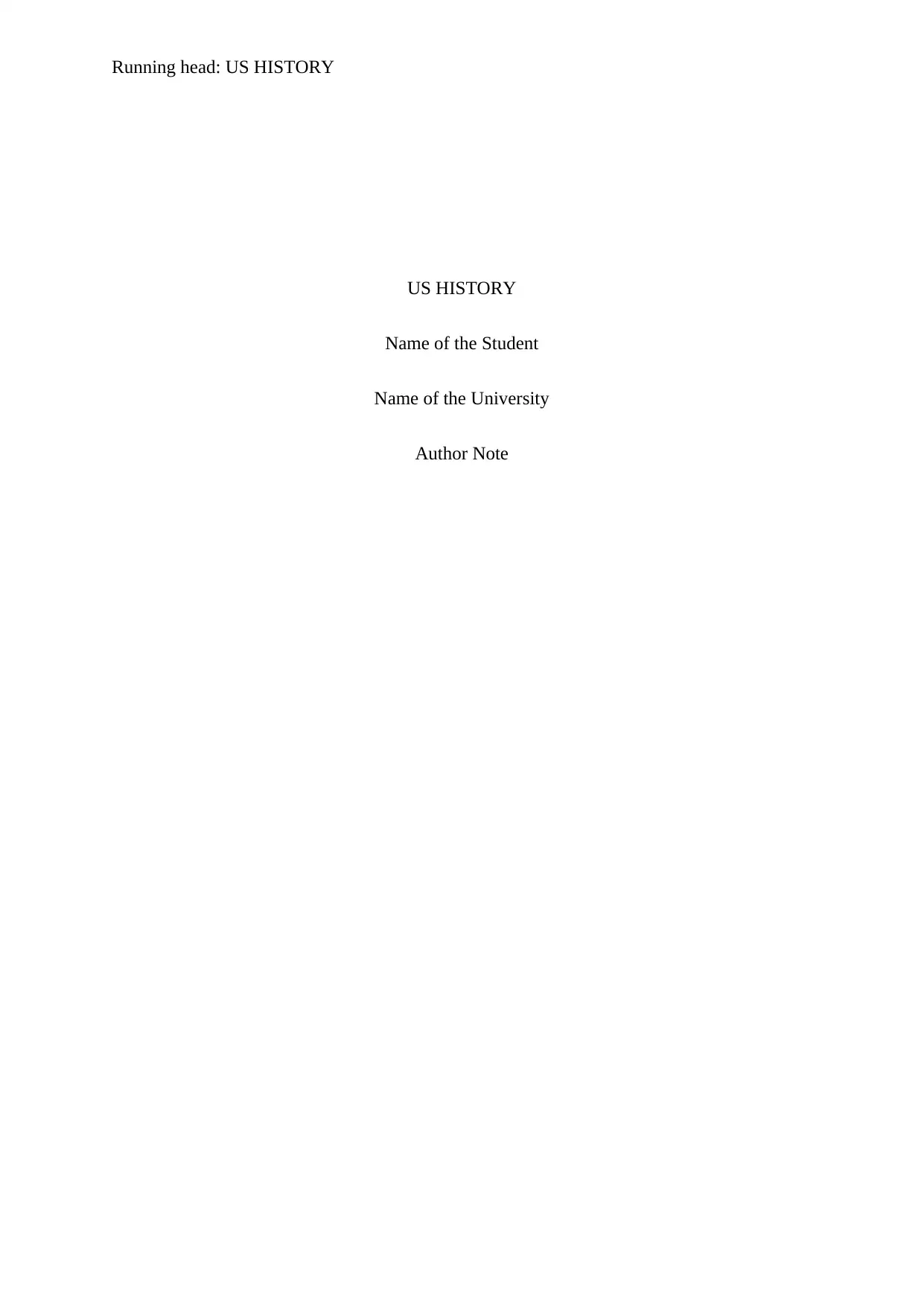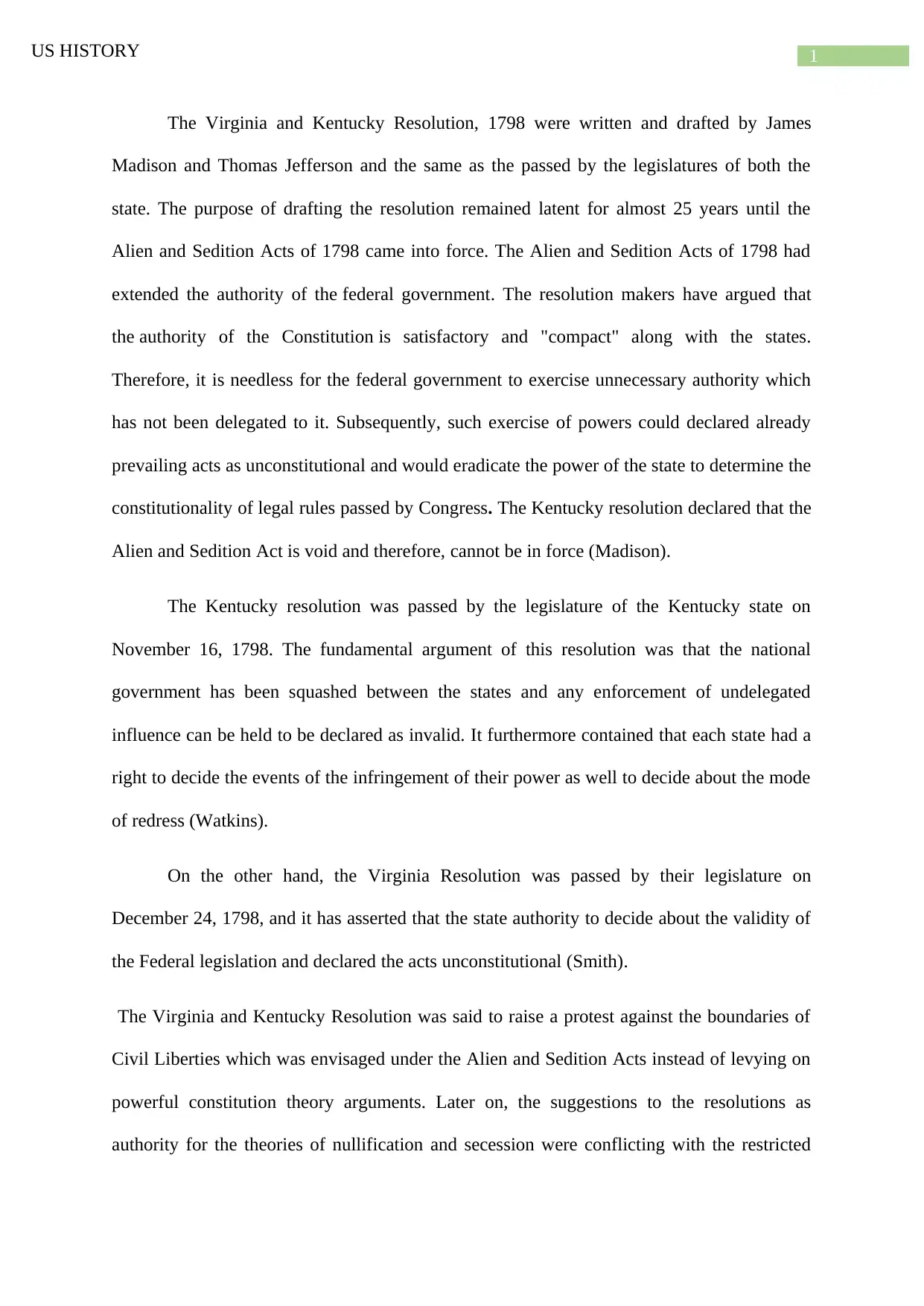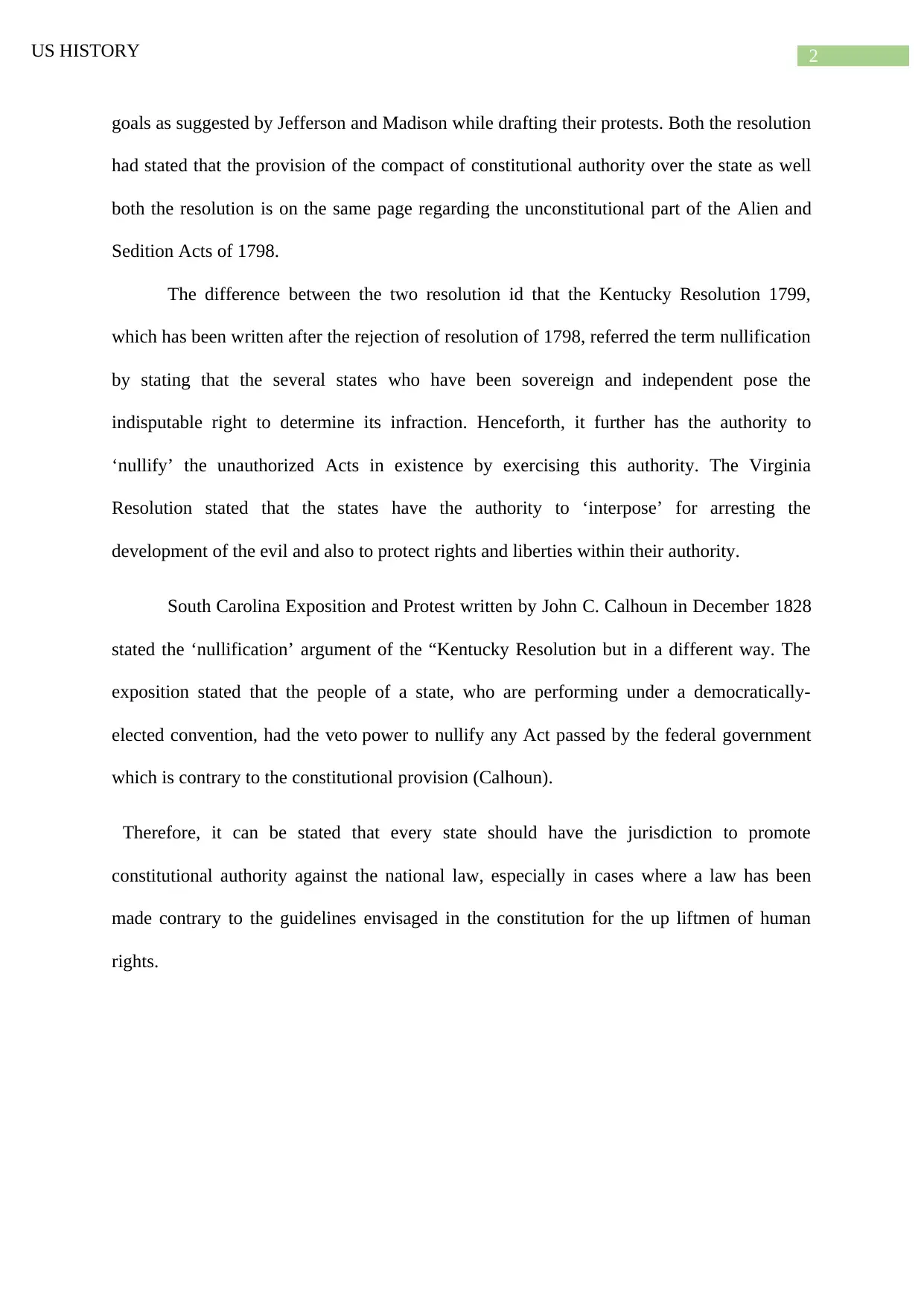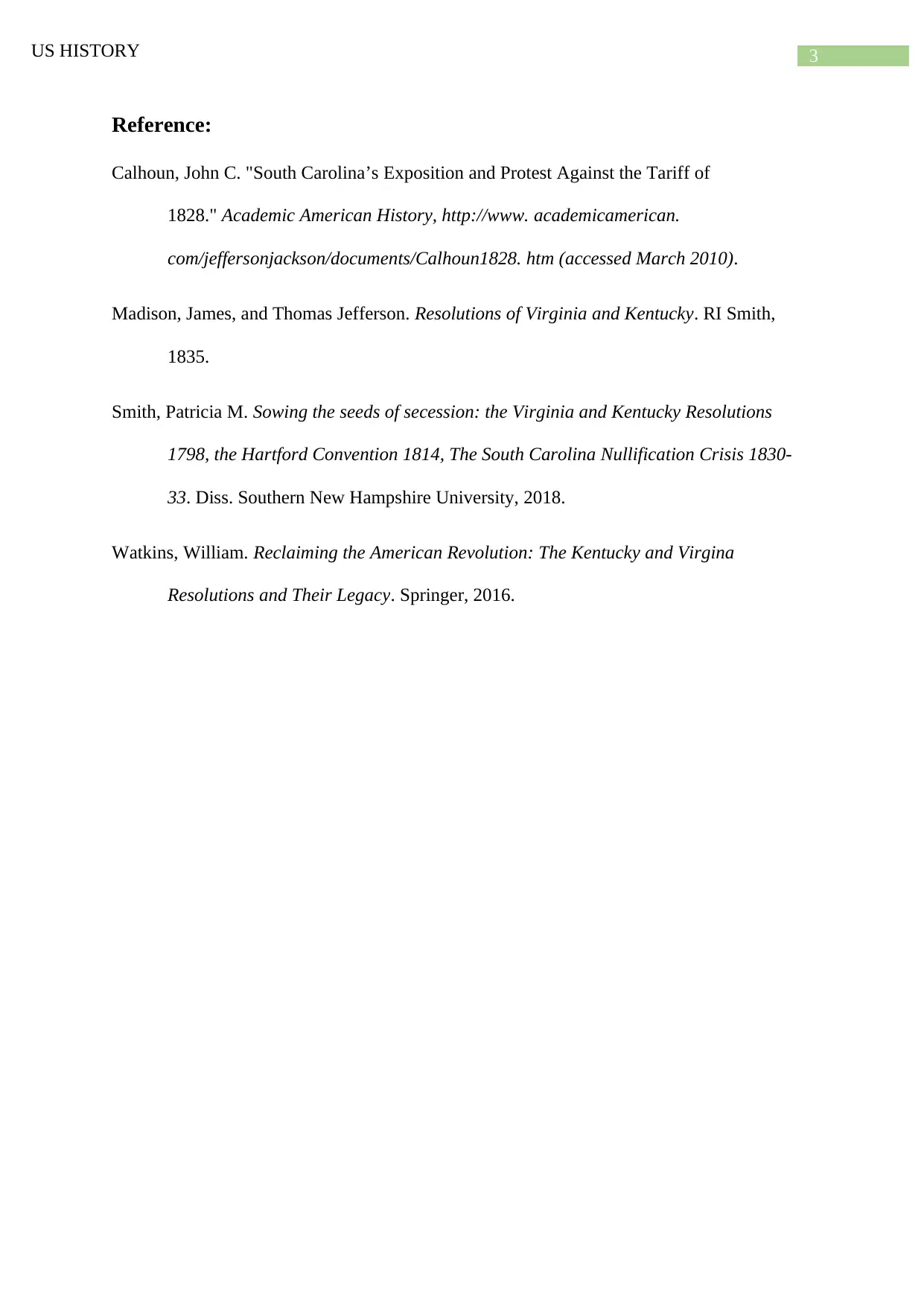US History: Comparing the Virginia and Kentucky Resolutions of 1798
VerifiedAdded on 2022/09/12
|4
|767
|22
Essay
AI Summary
This essay provides an analysis of the Virginia and Kentucky Resolutions, drafted in 1798 by James Madison and Thomas Jefferson in response to the Alien and Sedition Acts. The essay explains the context of the resolutions, which aimed to limit the federal government's authority and protect states' rights, arguing that the federal government should not exercise powers not explicitly delegated to it. It highlights the core arguments of the resolutions, including the assertion that the Constitution is a compact among the states, and the states have the right to determine the constitutionality of federal laws. The essay further contrasts the Virginia and Kentucky Resolutions, noting differences in their approaches, with the Kentucky Resolution of 1799 introducing the term "nullification." It also discusses the South Carolina Exposition and Protest by John C. Calhoun, which presented a similar nullification argument. The essay concludes by emphasizing the resolutions' significance in the ongoing debate over states' rights and federal power, and includes references to relevant historical documents and scholarly works.
1 out of 4






![[object Object]](/_next/static/media/star-bottom.7253800d.svg)